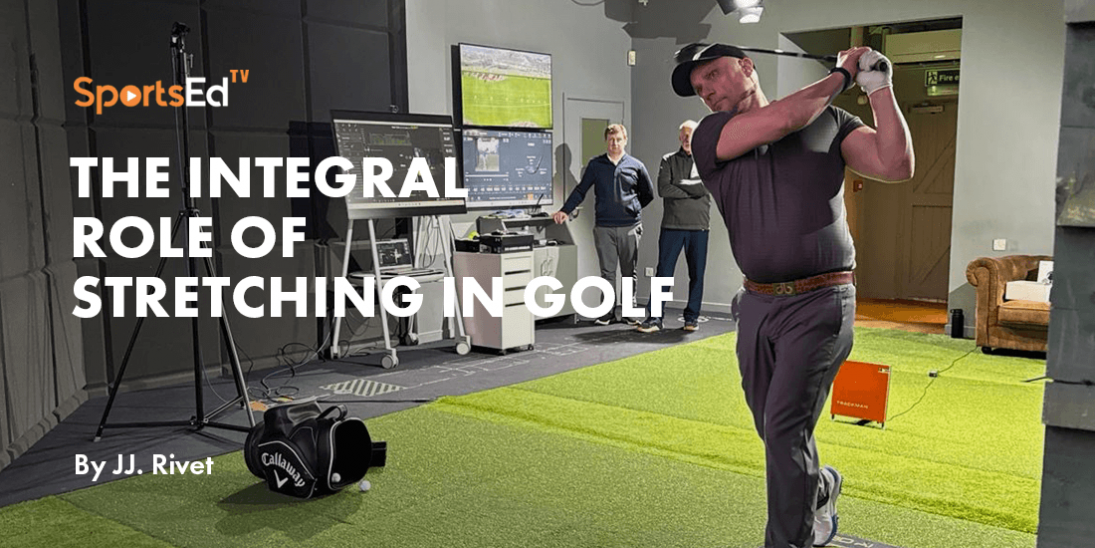Golf
Welcome and thanks for visiting...

How to Make That Swing Finally Stick

SportsEdTV Golf is committed to bringing athletes, coaches, and parents pro-level golf education videos for FREE. All levels, anywhere, anytime. Check out our full instructional library and sign up to join our golf community!
As you read this article, a ridiculous number of fellow golfers all over the world are engaging in sum zero training (which is basically training that doesn’t actually help anyone learn to play better golf). And those same golfers are also probably pondering the oldest (and, weirdly, most easily answerable) question in golf:
‘Why, why, why, why, why (etc.) can’t I take my range game to the golf course?’
The answer to this question (admittedly one that I and the Game Like Training team has spent a decade trying to solve) is a framework that helps coaches and players think and practice in a way that will lead to swing changes sticking and transferring to the golf course.
We’ve accumulated thousands of hours coaching golf at all levels, studying sports psychology, the learning sciences and – most importantly – spending time with some of the greatest minds in, not only professional golf, but also many other fields of human performance. And what that has given us (apart from significantly less hair than we used to) is a distillation of this vast bank of knowledge that makes it practical (and digestible) for you to become a better golfer where, and when, it matters most.
Our decade of investigating, learning and investigating some more has led us to our fundamental golfing truth:
‘learning happens via cognitive stress’ and most of you reading this book will fail to create this when you practice because you believe in repetition and muscle memory.
And, unfortunately for the golfing world, it’s all a lie……let me explain why.
Myth...
Repetition leads to better swings and better scores
If this news has unsettled, you (we know plenty of golfers and coaches who would sooner burn their bag than listen to this sort of heresy) let’s think about it in another way.
Imagine being in school and the teacher asking you the following sequence of questions, 5+5=? and 5+5=? and 5+5=? and 5+5=? and 5+5=? and 5+5=? Even as a child you would suspect this type of math test is not making you a great deal brighter.
In other words, we asked what actually creates that fundamental state of cognitive stress. The answer, not repetition, not muscle memory, but... spacing, variability and challenge
Watch this video to learn more
The Spacing Effect
To forget is to remember.
Now, even though this may seem like the kind of empty, pseudo-zen nonsense you’ll see written over pictures of sunsets – it’s a central pillar of human learning.
By incorporating the spacing effect to your training, you are effectively increasing the time you take between each rep.
This creates cognitive stress as your brain – or more specifically, your working memory – is challenged to recall previous successful reps (more so than if there is little or no time between shots). So, rather than simply machine-gunning balls down the range, you are actively teaching your brain to induce a deeper degree of learning,
A very basic example of this could be instead of hitting the same shot 20 times in a row as fast as you can, limiting yourself to hitting 1 ball a minute for 20 minutes – which, admittedly, may sound like a nightmare to range-ragers.
The Variability Effect
Some significant neurobiological research from Stanford University has provided a bit of bad news for the way most people practice golf – namely, the evidence that suggests our brains need variety if we are going to learn.
In other, more golfy, terms, learning through repetition is, in most scenarios, ineffective.
Instead, constantly changing the nature and application of tasks is vital for successfully learning and mastering any new movement – such as a golf swing – as this conscious variance is far better when it comes to engaging memory recall and creating cognitive stress.
So, rather than hitting 20 balls with the same club to the same target, the variability effect demands that you mix things up – changing your club and target regularly and repeatedly.
The Optimal Challenge Point
Increasing the spacing and variability in your practice will in turn increase the challenge point it presents. So, the more space and variability your training contains the higher the challenge point – and the more purposeful and rewarding that practice session has become.
Setting outcome goals is another way to elevate your own challenge point – with more complex and testing self-targeting representing a higher challenge point.
If we combine some of the scenarios from our spacing and variability effects, and embellish it with outcome goals we have already created the conditions of cognitive stress.
So, for example...
If we hit 20 balls in 20 minutes
AND we change our club and our target every two balls
AND we award ourselves with a point every time the ball is struck from the center of the club face AND if we set ourselves a target to achieve 14 points within those 20 balls
THEN we are in the state of cognitive stress and therefore, a state of learning
We’ve already touched on the limitations of mere repetition – namely the absence of spacing, variability, challenge and, of course, cognitive stress.
Simply put, it’s too easy, yet this is precisely what many golfers are habitually, even ritually, doing as ‘practice’.
So, let us change that right here by giving you a practice circuit that will help you FINALLY make that swing change stick.
Watch this video to see me explain a ‘golf practice circuit’ that will help you make your swing change stick
https://linktr.ee/iainhighfield - Click this link to download a free eBook that details an effective golf practice plan





